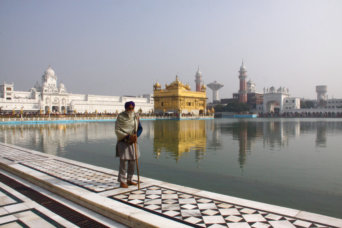- About
- Topics
- Picks
- Audio
- Story
- In-Depth
- Opinion
- News
- Donate
-
Signup for our newsletterOur Editors' Best Picks.Send
Read, Debate: Engage.
The population in South Asia is swelling at an alarming rate, putting immense pressure on natural resources such as water while the regimes ruling these populations remain embroiled in hostile regional politics.
In the wake of a deadly suicide attack on Indian security forces in the troubled valley of Kashmir, New Delhi rushed to announce that it will be stopping the flow of water to Pakistan.
Amid a tense climate of warmongering on both sides, the vulnerability of the poor farmers as potential first victims is evidently exposed. As India fumes in anger over the alleged involvement of a Pakistan-based militant outfit in the Kashmir bombing, Nitin Gadkari, Minister for Water Resources, announced that under the leadership of Prime Minister Narendra Modi, the government has decided to stop its share of water which used to flow to Pakistan. “We will divert water from Eastern rivers and supply it to our people in Jammu and Kashmir and Punjab," read Modi's tweet.
Clearly on its back foot due to the alleged support of the activities of the militant outfits such as Jaish Mohammad — the banned outfit blamed for the Kashmir bombing — Pakistan has received this threat with caution, and that anything beyond this would be ‘worrisome’.
The fact remains that Pakistan, like India, is facing a grim reality in regard to managing its water resources for a rapidly growing population.
For example, Pakistan’s biggest city of Karachi needs 1.1 billion gallons of water a day to function properly, but only receives roughly half of that via the Karachi Water and Sewerage Board (KWSB). This has been going on for years as the impacts of climate change and staggering population growth of 2 percent have now brought the whole country on the brinks of a famine-like situation where even the supposedly developed cities such as Karachi, once the capital of the country, resembles a drought-hit remote corner of the world.
In such a scenario, a full-blown war might just break out if anger overpowers wisdom in New Delhi or Islamabad under the tense geostrategic climate.
Photo: Chris Goldberg/flickr

